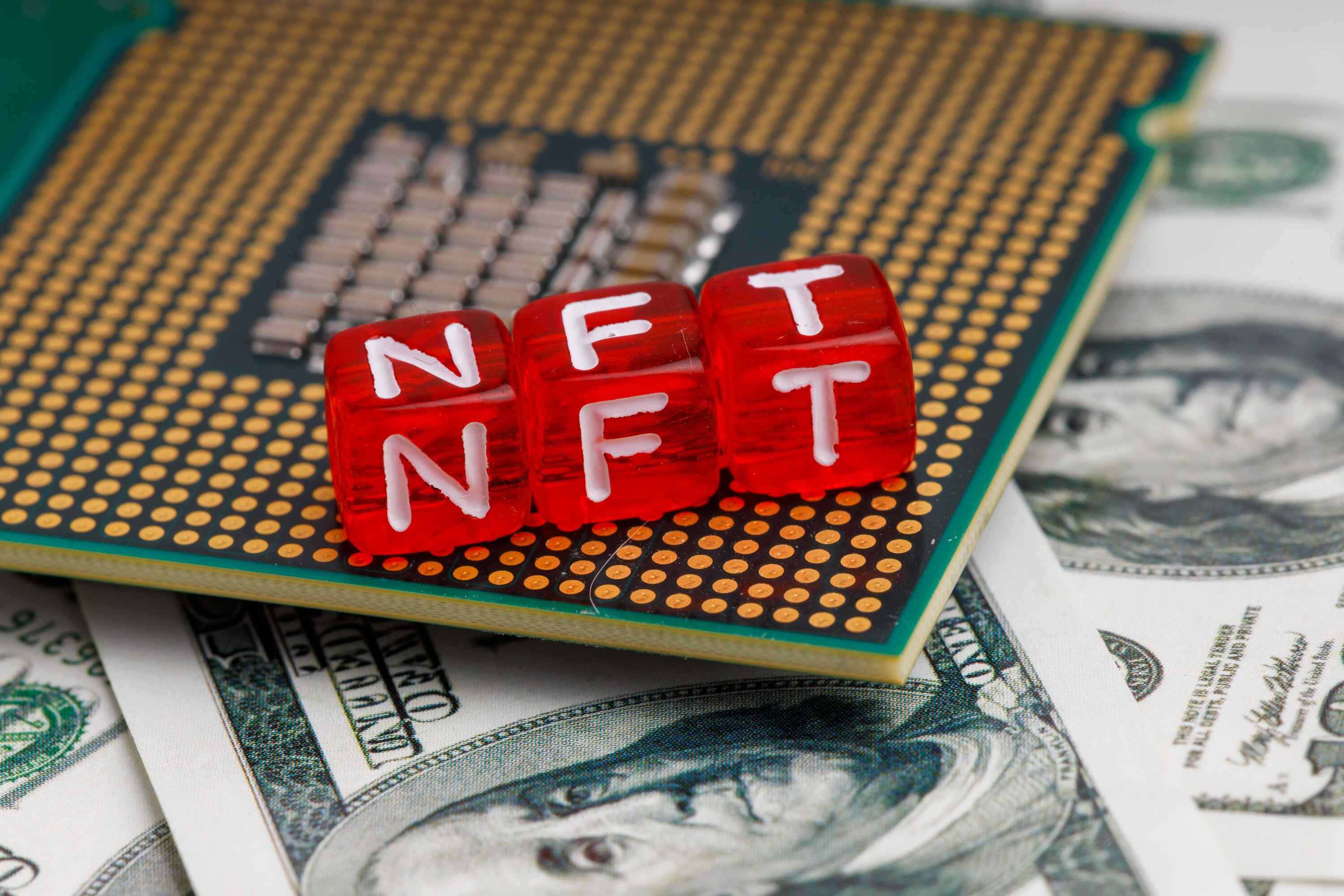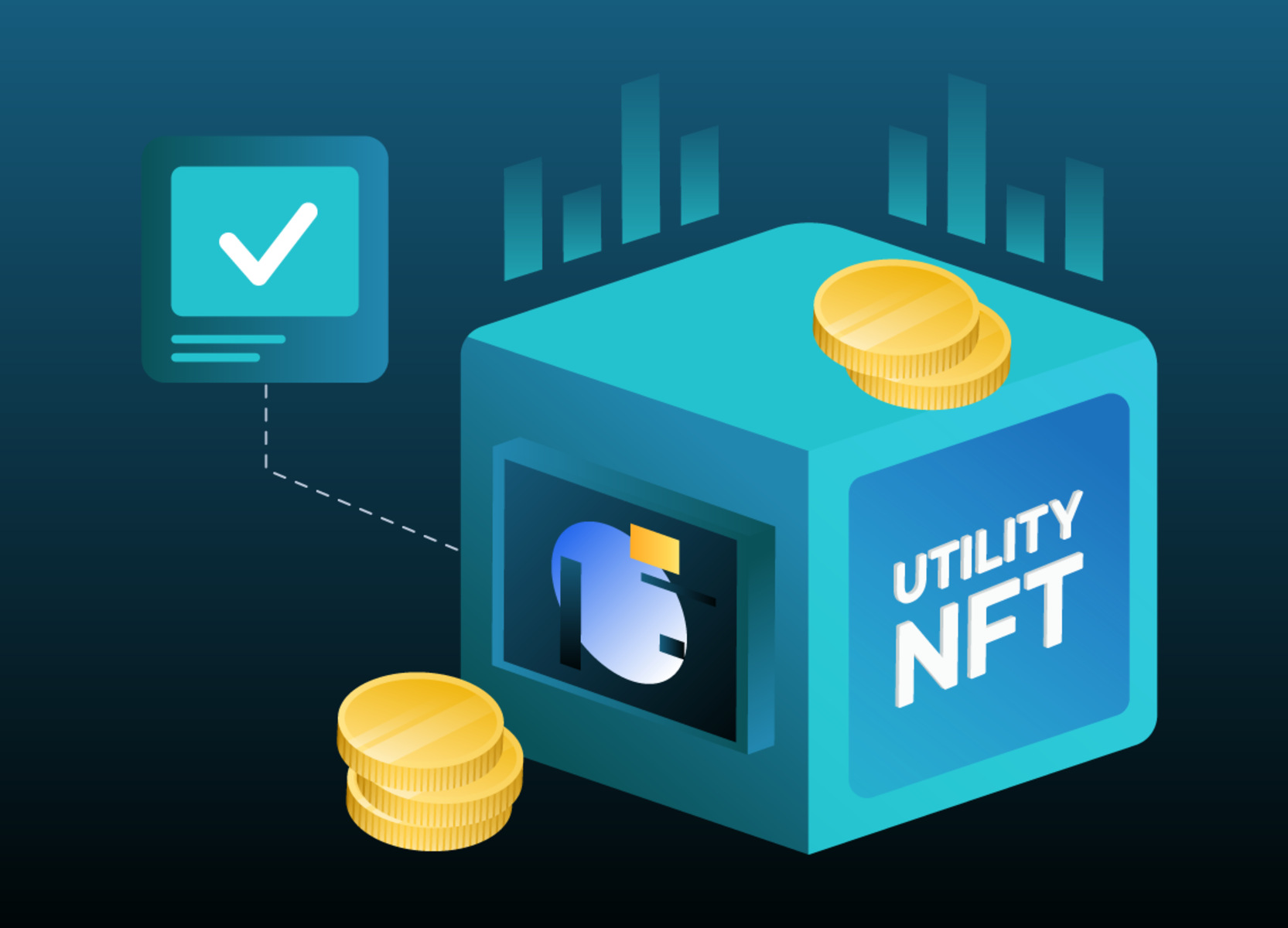The Rise of Digital Payment Platforms
Digital payment platforms have revolutionized the way we transact and manage our finances. With the advancement of technology, traditional methods of payment, such as cash and checks, are gradually being replaced by innovative and efficient digital payment solutions.
These platforms offer convenience, speed, and security, making them increasingly popular among businesses and consumers alike. Whether it’s online shopping, mobile payments, or peer-to-peer transfers, digital payment platforms have transformed the way we conduct financial transactions.
One of the key drivers behind the rise of digital payment platforms is the proliferation of smartphones and mobile devices. With mobile wallets and payment apps, consumers can now make payments with just a few taps on their phones. This has not only simplified the payment process but has also made it more accessible to a larger audience.
Additionally, digital payment platforms provide a range of benefits for businesses. They eliminate the need for physical cash handling and reduce the risk of theft and counterfeit transactions. Furthermore, these platforms offer real-time analytics and reporting, enabling businesses to gain valuable insights into customer behavior and preferences.
Moreover, digital payment platforms have played a crucial role in promoting financial inclusion. In developing countries, where access to formal banking services is limited, these platforms have provided an opportunity for underserved populations to participate in the digital economy. By offering simple and affordable payment solutions, digital platforms have empowered individuals to send and receive money, pay bills, and even access credit.
Security is a top concern when it comes to digital payment platforms. Many of these platforms employ advanced encryption techniques and multiple layers of security to protect user data and financial transactions. This has helped build trust among consumers and has boosted the adoption of these platforms.
Looking ahead, the rise of digital payment platforms is set to continue. As technology advances and consumer expectations evolve, we can expect to see a further integration of these platforms into various aspects of our lives. From contactless payments to voice-activated transactions, the future of digital payments is bound to bring even greater convenience and efficiency into our financial interactions.
The Growing Popularity of Open Banking
Open banking has emerged as a game-changer in the financial industry, revolutionizing how consumers and businesses interact with their financial data and services. This approach allows third-party financial service providers to access and utilize customer data, with the consent of the customer, to develop innovative products and services.
One of the key drivers behind the growing popularity of open banking is the increased desire for personalized financial experiences. Open banking enables individuals to securely share their financial information with multiple service providers, allowing for tailored solutions and personalized recommendations. This level of customization empowers consumers to better manage their finances and make informed decisions.
Open banking also promotes competition and innovation within the financial industry. By granting access to customer data, traditional banks and fintech startups can collaborate and create new products and services that cater to the evolving needs of customers. This level of collaboration fosters a more dynamic and diverse ecosystem, resulting in increased competition and improved offerings for consumers.
Moreover, open banking has the potential to drive financial inclusion. By harnessing customer data, financial service providers can develop solutions that cater to underserved populations, offering them access to affordable and tailored financial products. This can be particularly impactful in developing countries where access to formal banking services is limited.
Data security and privacy are of paramount importance in open banking. Regulatory frameworks, such as the General Data Protection Regulation (GDPR) in the European Union, ensure that customer data is handled securely and with consent. Additionally, open banking APIs (Application Programming Interfaces) enforce strict security measures to protect customer information. These security measures instill trust and confidence in consumers, encouraging them to embrace open banking services.
Looking ahead, the popularity of open banking is expected to soar. As more countries embrace open banking regulations and standards, we can anticipate a greater proliferation of innovative financial products and services. Consumers will have more control over their financial data and will benefit from a wider range of personalized and convenient solutions.
The Emergence of Decentralized Finance (DeFi)
Decentralized Finance, often referred to as DeFi, is a rapidly emerging sector within the financial industry that aims to transform traditional financial systems through the use of blockchain technology and smart contracts. DeFi seeks to eliminate centralized intermediaries and provide greater access, transparency, and control over financial transactions and services.
One of the key drivers behind the rise of DeFi is the potential for financial inclusivity. Traditional financial systems often have limitations that exclude individuals who are unbanked or underbanked. DeFi protocols offer an alternative by providing open access to financial services to anyone with an internet connection. This allows individuals from all over the world to participate in financial activities such as lending, borrowing, and trading, without the need for traditional intermediaries.
Another key aspect of DeFi is the use of decentralized lending and borrowing platforms. These platforms facilitate peer-to-peer lending without the need for a traditional bank as an intermediary. By leveraging blockchain technology and smart contracts, individuals can lend and borrow funds directly from each other, eliminating the need for a centralized entity. This enables individuals to access credit and earn interest on their assets in a more efficient and transparent manner.
In addition to lending and borrowing, DeFi has also revolutionized the world of decentralized exchanges (DEXs). DEXs allow users to trade cryptocurrencies directly with each other, without the need for a centralized exchange. These platforms provide increased security and privacy, as users retain control over their own funds throughout the trading process. Furthermore, DEXs offer lower fees and faster transaction times compared to traditional exchanges.
One of the challenges facing DeFi is the issue of scalability. As the popularity of DeFi protocols grows, the underlying blockchain networks may experience congestion and high transaction fees. However, developers are actively exploring solutions, such as layer 2 scaling solutions, to address these scalability concerns and ensure the continued growth and adoption of DeFi.
Looking ahead, the emergence of DeFi presents exciting opportunities for innovation and disruption in the financial industry. As the technology matures and regulatory frameworks adapt to this new paradigm, we can expect to see a greater integration of decentralized finance into our everyday lives. This shift towards a more decentralized and inclusive financial system has the potential to empower individuals, promote financial freedom, and reshape traditional notions of banking and finance.
The Advancement of Artificial Intelligence in Fintech
Artificial Intelligence (AI) has become a game-changer in the field of Financial Technology (Fintech), transforming the way financial services are delivered and improving customer experiences. AI algorithms and machine learning techniques are revolutionizing various aspects of the financial industry, including customer service, risk assessment, fraud detection, and investment management.
One of the significant advancements in AI in fintech is the use of chatbots and virtual assistants. These intelligent systems can interact with customers in real-time, providing personalized support and guidance. Chatbots are trained to understand and respond to customer queries, helping with account management, product recommendations, and even transactional activities. This not only enhances customer service but also reduces operational costs for financial institutions.
AI also plays a crucial role in risk assessment and fraud detection within the financial industry. Machine learning algorithms can analyze vast amounts of data to identify patterns and anomalies that can indicate potential risks or fraudulent activities. By automating these processes, financial institutions can effectively detect and prevent fraud, ensuring the security and integrity of financial transactions.
The advancement of AI has also transformed investment management. Robo-advisors, powered by AI algorithms, provide automated and personalized investment advice based on individual financial goals and risk tolerance. These platforms analyze market trends, historical data, and user preferences to offer investment recommendations and portfolio management services at a fraction of the cost of traditional financial advisors. This democratizes access to investment advice and allows individuals with varying levels of financial knowledge to participate in wealth management.
Furthermore, AI algorithms are improving credit assessment and underwriting processes. By analyzing diverse data sources, including social media profiles, online behavior, and transaction history, these algorithms can provide more accurate and comprehensive credit assessments. This enables financial institutions to make informed lending decisions and extend credit to a broader range of customers, including those with limited credit history.
Despite its numerous benefits, the ethical and regulatory aspects of AI in fintech remain important considerations. Ensuring fairness, transparency, and accountability in AI-driven financial systems is essential to building trust among customers and maintaining regulatory compliance. Striking the right balance between human oversight and AI automation is crucial to address these concerns effectively.
Looking ahead, the advancement of AI in fintech holds immense potential. As AI technologies continue to evolve and improve, we can expect even greater innovation in areas such as predictive analytics, personalized financial services, and risk management. AI will undoubtedly play a pivotal role in shaping the future of the financial industry, bringing increased efficiency, accuracy, and convenience to customers and financial institutions alike.
The Role of Big Data and Analytics in Financial Services
Big Data and analytics have become integral components of the financial services industry, revolutionizing how financial institutions operate and make informed business decisions. The availability of vast amounts of structured and unstructured data, combined with sophisticated analytical tools, has opened up new opportunities for risk management, customer insights, and operational efficiency.
One of the key roles of big data and analytics in financial services is risk management. Financial institutions can leverage large datasets to assess and mitigate risks in real-time. By analyzing historical market trends, customer behavior, and transaction data, predictive analytics models can identify potential risks and provide early warning signals. This enables institutions to make proactive decisions and develop strategies to minimize financial losses and ensure regulatory compliance.
In addition, big data and analytics offer valuable insights into customer behavior and preferences. By analyzing customer data, financial institutions can gain a comprehensive understanding of their clients’ needs and preferences. This enables personalized marketing campaigns, targeted product offerings, and improved customer service. By delivering tailored solutions, financial institutions can enhance customer satisfaction and loyalty.
Operational efficiency is another area where big data and analytics make a significant impact. By analyzing data from various sources, financial institutions can identify inefficiencies and streamline their operations. This includes automating manual processes, optimizing resource allocation, and reducing costs. Moreover, data-driven insights allow institutions to identify areas for process improvement and implement strategies to enhance operational efficiency.
Real-time fraud detection and prevention are also enhanced through big data and analytics. By analyzing transaction data in real-time, financial institutions can identify patterns and anomalies that may indicate fraudulent activities. This enables institutions to take immediate action and prevent financial losses. Advanced analytics techniques, such as machine learning algorithms, continuously learn from historical data to improve fraud detection accuracy and stay one step ahead of fraudsters.
However, the use of big data and analytics in financial services also raises concerns about data privacy and security. Financial institutions must ensure that they adhere to strict data protection regulations and implement robust security measures to protect customer information from breaches and unauthorized access. Building trust and transparency with customers is crucial in maintaining the responsible and ethical use of data in financial services.
Looking ahead, the role of big data and analytics in financial services will continue to evolve. As technology advances and data sources multiply, financial institutions will have access to even more comprehensive data sets. This will enable them to gain deeper insights into customer behavior, drive innovation, and improve overall decision-making processes. Embracing big data and analytics will be key to staying competitive and delivering superior financial services in the digital age.
The Integration of Fintech in E-commerce
The integration of financial technology (fintech) and e-commerce has transformed the way businesses and consumers engage in online transactions. Fintech solutions have revolutionized payment processing, financial management, and security in the e-commerce industry, providing a seamless and convenient experience for both merchants and customers.
One of the key areas where fintech has made a significant impact in e-commerce is payment processing. Traditional payment methods, such as credit cards and bank transfers, have been supplemented with innovative digital payment solutions. Mobile wallets, peer-to-peer transfers, and digital currencies have simplified and accelerated the payment process, allowing customers to make purchases with just a few taps on their devices. This enables businesses to provide a smoother checkout experience, reduce cart abandonment rates, and increase conversions.
Financial management tools have also become essential for e-commerce businesses. Fintech solutions offer real-time analytics and reporting, enabling merchants to gain insights into sales performance, customer behavior, and inventory management. With these insights, businesses can optimize their operations, identify growth opportunities, and make data-driven decisions to enhance profitability. Additionally, fintech tools streamline accounting processes, automate invoicing, and manage cash flows, providing businesses with greater control over their finances.
The integration of fintech in e-commerce has greatly improved security measures. Fraud prevention and detection tools powered by artificial intelligence and machine learning algorithms minimize the risk of fraudulent transactions. Payment gateways employ robust encryption techniques and secure protocols to protect sensitive customer data, ensuring safe and secure online transactions. This instills customer trust and confidence, enabling businesses to build strong relationships and loyalty.
Furthermore, fintech has facilitated global e-commerce by overcoming cross-border payment challenges. Fintech solutions enable businesses to accept payments in various currencies and provide merchants with seamless integration with international payment networks. This eliminates the complexities and costs associated with traditional cross-border transactions, empowering businesses to tap into global markets and expand their customer base.
However, e-commerce businesses must be mindful of the evolving regulatory landscape surrounding fintech and e-commerce. Compliance with data protection and privacy laws, as well as adherence to industry standards, is crucial to protect both the business and its customers. Staying up-to-date with regulatory changes and implementing robust security measures is essential for maintaining trust and ensuring a secure e-commerce environment.
Looking ahead, the integration of fintech in e-commerce will continue to advance. New technologies, such as blockchain and tokenization, hold promising potential for enhancing trust, transparency, and security in online transactions. Moreover, fintech innovations will further improve customer experiences, enabling personalized product recommendations, loyalty programs, and streamlined checkout processes. As the e-commerce industry continues to evolve, the integration of fintech will be essential for businesses to stay competitive and deliver exceptional online shopping experiences.
The Impact of Cryptocurrencies and Blockchain Technology
Cryptocurrencies and blockchain technology have had a profound impact on the financial industry, reshaping traditional systems of money, transactions, and record-keeping. Cryptocurrencies, such as Bitcoin and Ethereum, provide decentralized and secure digital currencies, while blockchain technology enables transparent and immutable transaction records. The adoption of cryptocurrencies and blockchain technology has brought about several significant impacts on various aspects of the financial industry.
One key impact of cryptocurrencies and blockchain technology is the disruption of traditional payment systems. Cryptocurrencies enable peer-to-peer transactions without the need for intermediaries like banks. This eliminates costly transaction fees, reduces the time required for international money transfers, and promotes financial inclusion for the unbanked population. Additionally, blockchain technology ensures transparent and secure transactions by maintaining an immutable and decentralized ledger.
Another area significantly impacted by cryptocurrencies and blockchain technology is fundraising and investment. Initial Coin Offerings (ICOs) have emerged as a new way for startups to raise capital by issuing their own cryptocurrencies. This provides opportunities for small and medium-sized enterprises (SMEs) to access funding from a global pool of investors, bypassing traditional venture capital channels. Moreover, blockchain-based smart contracts enable more efficient and secure investment mechanisms, such as tokenization of assets and decentralized exchanges.
The potential for blockchain technology extends beyond cryptocurrencies to areas such as supply chain management and identity verification. Blockchain can enhance supply chain transparency by recording and verifying every step of a product’s journey. This prevents counterfeit goods, reduces fraud, and enables consumers to make informed choices about the products they purchase. Additionally, blockchain-based identity verification systems can eliminate the need for multiple logins and unnecessary data sharing, ensuring data privacy and security.
Despite its many benefits, the adoption of cryptocurrencies and blockchain technology also presents challenges. Regulatory frameworks are still catching up with the fast-paced developments, leading to uncertainty and varying levels of acceptance across different jurisdictions. Security concerns include the vulnerability of digital wallets to hacking and the potential for money laundering and illicit activities with the pseudonymous nature of cryptocurrencies. These challenges need to be addressed to ensure a safe and regulated environment for cryptocurrency adoption.
Looking ahead, the impact of cryptocurrencies and blockchain technology is expected to continue growing. As more businesses and individuals recognize the benefits of decentralized and transparent transactions, cryptocurrencies are becoming more widely accepted as a form of payment. Blockchain technology will continue to disrupt various industries beyond finance, facilitating secure and efficient processes in areas such as healthcare, real estate, and government services. With ongoing innovation and increased regulatory clarity, the impact of cryptocurrencies and blockchain technology will shape the future of finance and digital transactions.
The Use of Robo-Advisors and Automated Wealth Management
Robo-advisors and automated wealth management platforms have transformed the way individuals manage their investments and financial goals. These digital platforms utilize algorithms and artificial intelligence to provide investment advice, portfolio management, and financial planning services. The use of robo-advisors has democratized access to professional investment advice, making wealth management more accessible and affordable for a broader range of investors.
One of the key benefits of robo-advisors is the elimination of human biases and emotions from investment decision-making. These platforms rely on data-driven algorithms to make investment recommendations based on an individual’s financial goals, risk tolerance, and investment horizon. This removes the potential for human error and emotional biases that can influence investment choices. As a result, robo-advisors offer more objective and disciplined investment strategies, improving portfolio performance.
Automated wealth management platforms also provide personalized and tailored investment strategies. Through a series of questionnaires and assessments, robo-advisors gather information on an individual’s financial situation, goals, and risk tolerance. Using this data, the algorithms generate a customized investment plan that aligns with the individual’s objectives. This level of personalization ensures that the investment strategy is suitable for each investor’s unique circumstances.
Robo-advisors offer cost-effective investment solutions compared to traditional financial advisors. With lower overhead costs and streamlined operations, robo-advisors can deliver investment management services at a fraction of the cost of human advisors. This makes professional wealth management services accessible to individuals with smaller investment portfolios who may not meet the minimum requirements of traditional advisory services.
Additionally, robo-advisors provide a user-friendly and intuitive interface. With easy-to-use online platforms and mobile apps, investors can access their portfolio information, track performance, and make investment decisions conveniently. This empowers investors to have greater control over their investments and stay informed about their financial goals.
However, it is important to note that robo-advisors are not meant to replace traditional financial advisors entirely. Instead, they complement human expertise by providing efficient and scalable solutions for certain investment needs. For complex financial situations, individuals may still benefit from the guidance of a human advisor who can provide comprehensive financial planning and address unique circumstances.
Looking ahead, the use of robo-advisors and automated wealth management is poised for continued growth. As technological advancements, such as artificial intelligence and machine learning, further enhance the capabilities of these platforms, investors can expect more sophisticated investment strategies and improved decision-making algorithms. Moreover, robo-advisory services may expand to cover other areas of financial planning, such as retirement planning, tax optimization, and financial education, providing a comprehensive suite of wealth management solutions to individuals of all levels of financial knowledge and experience.
The Evolution of Insurtech: Technology-transformed Insurance
Insurtech, the intersection of insurance and technology, is revolutionizing the insurance industry by leveraging innovative technologies to improve efficiency, enhance customer experiences, and transform traditional insurance processes. Insurtech companies are harnessing technologies such as artificial intelligence, blockchain, and big data analytics to introduce new products, streamline operations, and provide personalized insurance solutions.
One of the key areas where insurtech has made a significant impact is in the underwriting and risk assessment process. Traditional underwriting processes are often time-consuming and rely heavily on manual paperwork. Insurtech solutions automate this process using advanced algorithms and data analytics, enabling real-time risk assessment and faster policy issuance. This improves operational efficiency and reduces the time required for policy approval, benefiting both insurance providers and customers.
The integration of advanced technologies has also enabled insurance companies to offer personalized insurance products and services. By leveraging data from various sources, such as social media and wearables, insurtech companies can assess individual risk profiles more accurately. This enables the development of tailored insurance plans that meet the specific needs of customers. Additionally, the use of telematics in auto insurance allows policyholders to benefit from usage-based premiums, where insurance costs are determined by actual driving behavior.
Furthermore, insurtech has brought significant advancements in claims processing and management. Through the use of technologies like blockchain and smart contracts, insurance claims can be automated and processed in a more transparent and efficient manner. This reduces administrative delays and improves the overall claims experience for policyholders. Additionally, the integration of data analytics tools enables faster and more accurate claims assessment, reducing fraudulent claims and minimizing losses for insurance companies.
Another area of growth in insurtech is the rise of peer-to-peer (P2P) insurance models. P2P insurance platforms leverage blockchain technology to create a decentralized network where individuals can pool their risks and provide insurance coverage to one another. This eliminates the need for traditional insurance intermediaries and offers cost savings for customers. P2P insurance models have the potential to disrupt the traditional insurance market by providing more transparency, lower premiums, and personalized coverage options.
However, along with the benefits of insurtech come challenges related to data privacy, security, and regulation. Insurtech companies must ensure the protection of customer data, comply with data protection regulations, and implement robust cybersecurity measures to safeguard sensitive information. Additionally, regulatory frameworks must adapt to the evolving nature of insurtech to ensure consumer protection and maintain market stability.
Looking ahead, the evolution of insurtech is set to continue transforming the insurance industry. As technology advances and customer expectations evolve, we can expect to see even greater integration of insurtech solutions. With innovations in areas such as artificial intelligence, blockchain, and the Internet of Things, insurtech has the potential to enhance risk management, improve customer experiences, and create new opportunities for insurance providers and policyholders alike.
The Rise of Neobanks and Challenger Banks
In recent years, the banking industry has witnessed the rise of neobanks and challenger banks, disrupting the traditional banking landscape and offering innovative financial services. Neobanks, also known as digital banks or branchless banks, are fully digital institutions that operate primarily through mobile apps and online platforms. Challenger banks, on the other hand, are smaller traditional banks or fintech companies that aim to challenge established banks by providing customer-centric and technologically-driven banking solutions.
One of the key drivers behind the rise of neobanks and challenger banks is the shift in consumer preferences towards convenience and digital-first banking experiences. These new players in the market offer intuitive user interfaces, simplified account opening processes, and 24/7 accessibility through mobile apps. This appeals to the tech-savvy generation that seeks frictionless and personalized banking services.
Neobanks and challenger banks differentiate themselves by focusing on customer-centric features and innovative product offerings. They offer features such as real-time transaction notifications, goal-based savings tools, and spending analytics. Additionally, their product suites often include alternative financial services like budgeting tools, international money transfers, and multi-currency accounts. These offerings cater to the changing needs of consumers who seek more control over their finances and desire a comprehensive range of services in one place.
Furthermore, neobanks and challenger banks are known for their agility and ability to adapt to evolving customer demands. Unlike traditional banks burdened by legacy systems and bureaucratic processes, these new players can quickly introduce new features and update their platforms based on customer feedback. They leverage technology and data analytics to personalize services, deliver targeted marketing campaigns, and make data-driven decisions. This customer-centric approach cultivates a stronger connection and engagement with their user base.
Another advantage of neobanks and challenger banks is their cost-effective and transparent fee structures. Traditional banks often impose fees for services like ATM withdrawals, account maintenance, and foreign currency transactions. In contrast, neobanks and challenger banks typically offer fee-free or low-fee banking services, with transparent pricing structures and minimal hidden charges. Additionally, their online nature allows them to operate with lower overhead costs, enabling them to pass on cost savings to their customers.
While neobanks and challenger banks have gained popularity, they still face challenges in areas such as regulatory compliance, profitability, and customer trust. Regulatory frameworks are continuously evolving to address the unique characteristics of these digital institutions, ensuring consumer protection and maintaining financial stability. Neobanks and challenger banks also need to demonstrate their profitability and scalability to attract long-term investors and compete against traditional banks. Building trust is crucial, and transparent communication, robust security measures, and reliable customer support are vital for establishing credibility within the industry.
Looking ahead, the rise of neobanks and challenger banks is expected to continue as more individuals embrace digital banking and seek innovative financial solutions. As technology advances and these institutions further establish themselves, they have the potential to disrupt the traditional banking model, influence industry practices, and challenge established players. The dynamic and competitive banking landscape created by neobanks and challenger banks will ultimately benefit consumers with better banking experiences, enhanced product offerings, and increased transparency in the financial industry.
The Shift towards Contactless and Mobile Payments
The world of payments has undergone a significant transformation with the widespread adoption of contactless and mobile payment methods. These innovative payment technologies have revolutionized the way we make transactions, offering convenience, speed, and enhanced security. The shift towards contactless and mobile payments has been fueled by advancements in technology, changing consumer preferences, and the need for a seamless and touchless payment experience.
Contactless payments, also known as tap-and-go payments, allow consumers to make transactions by simply tapping their payment card or mobile device on a contactless-enabled terminal. This eliminates the need for physical contact with cash or payment terminals, providing a faster and more hygienic payment experience. The convenience of contactless payments has made them increasingly popular, especially in environments where speed and efficiency are essential, such as retail stores, public transportation, and food and beverage establishments.
Mobile payments, on the other hand, enable consumers to make transactions using their smartphones or other mobile devices. Mobile payment apps, such as Apple Pay, Google Pay, and Samsung Pay, securely store payment card information and allow users to make payments by tapping their device on a contactless terminal or by scanning a QR code. Mobile payments offer added convenience, as consumers can leave their physical wallets at home and carry out transactions with just their smartphones. Additionally, mobile payment apps often provide features like digital receipts, loyalty program integration, and transaction history, further enhancing the overall payment experience.
The adoption of contactless and mobile payments has been accelerated by various factors. First, advancements in Near Field Communication (NFC) technology have made contactless payments more accessible and secure. NFC technology enables seamless communication between payment devices and terminals, ensuring quick and reliable payment transactions. Second, the widespread use of smartphones and mobile devices has created a conducive environment for mobile payments to thrive. With the prevalence of smartphones, consumers have the necessary hardware to make mobile payments, and businesses have the infrastructure to accept them.
The COVID-19 pandemic has further accelerated the shift towards contactless and mobile payments. The need for touchless transactions to minimize physical contact and reduce the spread of the virus has prompted businesses and consumers to embrace these payment methods. Governments and health organizations have also encouraged the use of contactless and mobile payments to promote public health and safety. As a result, contactless and mobile payments have become the preferred choice for many individuals and businesses, even beyond the pandemic.
The shift towards contactless and mobile payments offers several benefits. First and foremost, these payment methods offer enhanced security compared to traditional payment methods. They utilize tokenization and encryption technologies, making it difficult for fraudsters to obtain and misuse payment card information. Additionally, contactless and mobile payments provide faster transactions, reducing waiting times at payment terminals and improving overall customer satisfaction. They also facilitate a seamless and frictionless payment experience, eliminating the need for physical cash handling or entering PIN numbers.
Looking ahead, the adoption of contactless and mobile payments is expected to continue its upward trajectory. As technology continues to advance, the usability and security of these payment methods will further improve. Businesses and financial institutions will continue to invest in developing seamless payment experiences, integrating loyalty programs and value-added services into contactless and mobile payment apps. Moreover, the acceptance of contactless and mobile payments will expand to new industries, including service-based businesses such as salons, healthcare providers, and concert venues. The shift towards contactless and mobile payments has become a transformative trend, shaping the future of how we pay for goods and services.
The Importance of Cybersecurity in Fintech
Cybersecurity plays a critical role in the financial technology (fintech) industry, where the handling of sensitive financial data and transactions is paramount. As fintech solutions continue to advance and gain prominence, ensuring robust cybersecurity measures is vital to safeguard customer information, protect financial transactions, and maintain trust in the digital financial ecosystem.
One of the primary reasons why cybersecurity is of utmost importance in fintech is the constant threat of cyberattacks. Cybercriminals are targeting fintech platforms to gain unauthorized access to sensitive data, steal financial information, and carry out fraudulent activities. These attacks can have severe consequences for both businesses and customers, leading to financial losses, reputational damage, and compromised personal information.
Protecting customer data is a fundamental aspect of cybersecurity in fintech. Fintech companies collect and store vast amounts of sensitive information, including bank account details, social security numbers, and credit card information. These companies are responsible for ensuring the confidentiality, integrity, and availability of customer data, while also complying with data protection regulations.
Securing financial transactions is another critical concern in fintech. As digital payments and online banking become more prevalent, it is essential to protect financial transactions from interception, unauthorized access, and tampering. Implementing secure encryption protocols, multi-factor authentication, and robust fraud detection systems are crucial in safeguarding financial transactions and preventing fraudulent activities.
Furthermore, fintech platforms must ensure the resilience and availability of their services. Any downtime or disruptions in service can have severe implications for businesses and customers. Implementing robust backup systems, disaster recovery plans, and continuous monitoring mechanisms helps minimize the risk of service interruptions and ensures business continuity in the face of cyber threats.
Fintech companies are also facing regulatory pressures to comply with cybersecurity standards and regulations. Governments and regulatory bodies are increasingly focusing on cybersecurity frameworks to protect consumers and maintain the stability of the financial system. Fintech companies must demonstrate compliance with these regulations by implementing adequate security measures, conducting regular risk assessments, and engaging in third-party security audits.
Moreover, establishing a culture of cybersecurity awareness and education is essential in fintech. Employees must be trained to recognize and respond to potential cybersecurity threats, as human error can often be a weak link in the security chain. Regular cybersecurity training programs, incident response procedures, and ongoing monitoring of security practices help create a culture of vigilance and resilience.
Looking ahead, the importance of cybersecurity in fintech will only continue to grow as technology evolves and cyber threats become more sophisticated. Fintech companies need to continuously invest in advanced security technologies, threat intelligence, and incident response capabilities to stay ahead of cybercriminals. Collaboration between fintech companies, regulatory bodies, and cybersecurity experts is crucial to strengthen the overall security posture of the fintech ecosystem and ensure the continued trust of customers in digital financial services.
The Role of Regtech: Ensuring Regulatory Compliance
Regtech, short for regulatory technology, has emerged as a crucial component in the financial industry, helping businesses navigate the complex regulatory landscape and ensure compliance with evolving regulations. Regtech solutions leverage technology, data analytics, and automation to streamline compliance processes, enhance regulatory reporting, and mitigate the risks associated with non-compliance.
One of the key roles of regtech is to simplify and automate compliance tasks. By utilizing advanced technologies such as artificial intelligence and machine learning, regtech solutions can analyze vast amounts of regulatory data and identify compliance requirements specific to an organization. These solutions provide businesses with timely and accurate guidance, reducing the manual effort required for compliance and allowing organizations to focus on their core operations.
Regtech also enhances regulatory reporting and transparency. Reporting requirements have become increasingly demanding, with financial institutions needing to provide more detailed and timely reports to regulatory authorities. Regtech solutions automate data collection, data aggregation, and reporting processes, ensuring accuracy and efficiency in regulatory reporting. This improves transparency for both internal stakeholders and regulatory bodies and helps ensure that organizations meet their reporting obligations.
Additionally, regtech enables organizations to effectively manage regulatory changes and keep up with evolving requirements. The regulatory landscape is constantly evolving, and staying updated with new regulations and compliance requirements can be challenging. Regtech solutions provide businesses with real-time updates on regulatory changes, helping them stay informed and adapt their compliance procedures accordingly. This ensures that businesses can quickly implement changes to their policies and processes to maintain compliance.
Furthermore, regtech solutions facilitate the monitoring and detection of potential compliance breaches. By utilizing advanced analytics and data monitoring techniques, regtech systems can detect anomalies and patterns that may indicate non-compliance or fraudulent activities. This early detection allows organizations to take corrective actions promptly, minimizing the risk of penalties, reputational damage, and other adverse consequences associated with non-compliance.
Regtech also enables organizations to demonstrate and document their compliance efforts. Regulatory audits and investigations often require organizations to provide evidence of their compliance activities and controls. Regtech solutions capture and store relevant data and documentation, making it easier to produce evidence of compliance when required. This streamlines the audit process and provides organizations with a comprehensive audit trail, ensuring transparency and facilitating regulatory oversight.
Looking ahead, the role of regtech in ensuring regulatory compliance will continue to grow in importance. As regulations become more stringent and complex, organizations will rely on regtech solutions to effectively manage their compliance obligations. Additionally, the advancements in technologies such as artificial intelligence, blockchain, and data analytics will further enhance the capabilities of regtech solutions, enabling more accurate, efficient, and comprehensive compliance management. The collaboration between regulatory authorities, financial institutions, and regtech providers will be crucial in driving the adoption and evolution of regtech to meet the evolving compliance needs of the financial industry.
The Growth of Crowdfunding and Peer-to-Peer Lending Platforms
Crowdfunding and peer-to-peer (P2P) lending platforms have become increasingly popular in recent years, transforming the way individuals and businesses access financing. These platforms provide an alternative to traditional financing methods by connecting borrowers directly with lenders, bypassing the traditional intermediaries such as banks. The growth of crowdfunding and P2P lending platforms has opened up new opportunities for both borrowers and investors, fostering innovation and expanding access to capital.
One of the key drivers behind the growth of these platforms is the democratization of finance. Crowdfunding and P2P lending allow individuals and businesses to access funding from a wide range of investors, including retail investors and institutional funds. This enables smaller businesses and startups to raise capital and launch innovative projects that may have previously struggled to secure financing through traditional channels.
Crowdfunding and P2P lending platforms offer a streamlined and convenient process for borrowers. Unlike traditional financing, which often involves lengthy application processes and strict eligibility criteria, these platforms provide a simpler and more accessible route to financing. Borrowers can create an online profile or project listing outlining their funding needs, and investors can review and choose to fund projects that align with their interests and risk preferences.
Investors, on the other hand, benefit from the potential for higher returns compared to traditional investment avenues. P2P lending platforms provide investors with opportunities to earn interest income by lending money directly to borrowers. Crowdfunding platforms may offer equity or reward-based investments, where investors have the potential for capital appreciation or receive unique rewards or products in return for their investment. This allows investors to diversify their investment portfolios and support projects or businesses they believe in.
Furthermore, crowdfunding and P2P lending platforms foster increased financial inclusivity. These platforms provide access to funding for individuals and businesses that may face difficulties obtaining financing through conventional means. Individuals with limited credit history or small businesses without substantial collateral can leverage crowdfunding and P2P lending platforms to access capital from a community of lenders who are willing to take on the associated risks.
However, along with the growth of these platforms comes risks and challenges. Regulatory frameworks around crowdfunding and P2P lending vary across countries, and ensuring investor protection and minimizing fraudulent activities are crucial. Platforms must implement robust verification processes, conduct due diligence on borrowers, and provide clear and transparent information to both borrowers and investors. Additionally, managing credit risk and maintaining loan quality is paramount to safeguard the interests of both borrowers and investors.
Looking ahead, the growth of crowdfunding and P2P lending platforms is expected to continue as interest in alternative financing methods grows. As technology continues to advance, these platforms will evolve to improve user experiences, enhance transparency, and mitigate risks. The integration of technologies like blockchain and smart contracts has the potential to further streamline and secure transactions on these platforms. Additionally, regulatory frameworks will continue to evolve to strike a balance between investor protection and enabling the growth of these innovative financing models.
The Adoption of Biometric Authentication in Financial Services
Biometric authentication has gained significant traction in the financial services industry as a secure and convenient method of verifying the identity of individuals. Biometric authentication utilizes unique physical or behavioral characteristics, such as fingerprints, facial recognition, voice patterns, or iris scans, to authenticate users and grant access to financial services. The adoption of biometric authentication has brought numerous benefits to both financial institutions and customers, enhancing security, improving user experiences, and preventing identity fraud.
One of the key advantages of biometric authentication is its high level of security. Biometric data is inherently unique to each individual and cannot be easily replicated or stolen. Unlike traditional authentication methods like passwords or PINs, which can be lost, forgotten, or compromised, biometric features are difficult to replicate or bypass. This makes it significantly harder for fraudsters to gain unauthorized access to financial accounts or conduct fraudulent transactions.
The adoption of biometric authentication has also improved user experiences in financial services. Biometrics offer a more seamless and user-friendly authentication process, eliminating the need to remember complex passwords or carry physical tokens. Users can quickly and conveniently authenticate themselves using their biometric features, reducing friction and enhancing the overall user experience. This is particularly important in mobile banking, where users demand convenient access to their financial accounts while maintaining high levels of security.
Furthermore, biometric authentication helps prevent identity theft and fraud. The use of biometric data adds an additional layer of security, making it extremely difficult for fraudsters to impersonate individuals and gain unauthorized access to financial accounts. This protects customers from financial losses and mitigates the risk of identity theft, which can have severe consequences for individuals and financial institutions alike.
The widespread adoption of biometric authentication has been facilitated by the increasing prevalence of biometric sensors in smartphones and other devices. Built-in fingerprint scanners and facial recognition technologies have become standard features in many mobile devices, making it easier for individuals to use biometrics as a means of authentication. This has fueled the adoption of biometric authentication in various financial services, including mobile banking, digital payments, and online account access.
However, the adoption of biometric authentication also raises concerns regarding privacy and data protection. Collecting and storing biometric data requires robust security measures and compliance with data protection regulations. Financial institutions must ensure that biometric data is securely stored, encrypted, and used only for authentication purposes. Implementing stringent data protection practices and obtaining the explicit consent of users are essential to safeguarding their privacy and maintaining their trust.
Looking ahead, the adoption of biometric authentication in financial services is expected to increase as technology advances and user acceptance grows. Advancements in biometric technologies, such as improved accuracy and anti-spoofing capabilities, will further enhance security and reliability. Additionally, the integration of biometrics with emerging technologies like blockchain can provide decentralized and tamper-resistant authentication systems. As financial institutions continue to prioritize customer convenience and security, biometric authentication will play a crucial role in shaping the future of financial services.
The Expansion of Financial Inclusion through Fintech Solutions
Financial inclusion, the access and usage of affordable financial services, is a critical goal worldwide. Fintech solutions have played a significant role in expanding financial inclusion by leveraging technology to reach underserved populations and provide them with access to various financial services. Through innovative products and services, fintech has empowered individuals, particularly those in developing countries, to participate more actively in the formal financial system and improve their economic well-being.
One of the primary ways fintech promotes financial inclusion is through mobile banking and digital payment solutions. Many individuals in underserved areas lack access to traditional banking services due to factors such as geographical distance, high costs, and limited infrastructure. Fintech solutions enable these individuals to access basic financial services, such as opening bank accounts, making payments, and transferring funds, through their mobile phones. Mobile money platforms have made significant strides in Africa, Asia, and Latin America, enabling millions of previously unbanked individuals to engage in secure and convenient financial transactions.
Another area of fintech’s contribution to financial inclusion is in providing access to credit and small business financing. Traditional financial institutions often have stringent requirements and collateral constraints that limit access to credit for individuals with limited credit histories or low incomes. Fintech platforms use alternative data sources, such as mobile phone usage history or social media data, to assess creditworthiness and offer small loans to underserved populations. This enables individuals to invest in education, start small businesses, and improve their living standards.
Additionally, fintech solutions have expanded access to financial education and financial planning tools. Lack of financial literacy is a significant barrier to financial inclusion, as individuals may struggle to understand and navigate the formal financial system. Fintech platforms offer financial education resources, including budgeting tools, savings calculators, and investment simulators, to help individuals make informed financial decisions. These tools empower individuals to take control of their finances, build savings, and plan for the future.
Fintech has also facilitated access to insurance and risk management. In many developing countries, individuals and small businesses face significant vulnerabilities due to lack of access to insurance products. Fintech-enabled microinsurance platforms have emerged to address this gap, providing affordable and tailored insurance coverage to vulnerable populations. These platforms leverage mobile technology and innovative distribution models to reach individuals in remote and previously underserved areas, ensuring that they have access to critical insurance protection.
However, there are still challenges to overcome in achieving full financial inclusion through fintech. Internet accessibility, digital literacy, and affordability of devices and data plans are key barriers that need to be addressed. Collaboration between fintech providers, policymakers, and regulatory authorities is essential to develop inclusive policies and regulations that support the growth of fintech solutions while protecting consumer rights and ensuring the stability of the financial system.
Looking ahead, fintech has the potential to further advance financial inclusion by harnessing emerging technologies such as blockchain, artificial intelligence, and Internet of Things. These technologies can enable more seamless, secure, and cost-effective delivery of financial services to underserved populations. As fintech continues to innovate and expand, it will play a crucial role in bridging the financial inclusion gap, empowering individuals, and fostering economic growth and development around the world.
The Future of Fintech: Trends to Watch Out For
The fintech industry is continuously evolving, driven by technological advancements and changing consumer expectations. As we look into the future of fintech, several key trends are expected to shape the industry and revolutionize the way we engage with financial services. These trends will have far-reaching implications for businesses, consumers, and the wider financial ecosystem.
1. Artificial Intelligence (AI) and Machine Learning (ML): AI and ML will continue to play a crucial role in fintech, powering a wide range of applications, including personalized customer experiences, fraud detection, risk management, and investment advice. As algorithms become smarter and more sophisticated, the ability to analyze large volumes of data and generate actionable insights will transform the way financial institutions operate and interact with customers.
2. Open Banking and API integration: Open banking initiatives and the use of Application Programming Interfaces (APIs) will drive collaboration and innovation in the financial industry. With open banking, consumers can securely share their financial data with multiple service providers, enabling seamless integration of various financial services. This collaborative and interconnected ecosystem will create new opportunities for fintech startups and established institutions to deliver personalized solutions to customers.
3. Blockchain and Distributed Ledger Technology (DLT): Blockchain technology has the potential to revolutionize multiple aspects of financial services, including cross-border transactions, identity verification, and smart contracts. By providing a transparent, secure, and decentralized platform, blockchain can simplify and streamline complex financial processes, improve efficiency, and reduce costs. As the technology matures and scalability challenges are addressed, we can expect wider adoption of blockchain and DLT in the fintech industry.
4. Regulatory Technology (Regtech): Regtech solutions will continue to play a crucial role in ensuring compliance with evolving regulations. As regulatory requirements become more complex, automation and analytics will help streamline compliance processes, enhance risk management, and improve regulatory reporting. Regtech will provide financial institutions with the tools and capabilities to keep pace with regulatory changes in an efficient and cost-effective manner.
5. Enhanced cybersecurity measures: The ever-growing threat of cybercrime will drive the adoption of advanced cybersecurity measures in the fintech industry. Robust security protocols, data encryption, and multi-factor authentication will be essential to protect sensitive customer information and ensure the integrity of financial transactions. Fintech companies will continue to invest in advanced security technologies and collaborate with industry experts to stay ahead of evolving cyber threats.
6. Digital currencies and Central Bank Digital Currencies (CBDCs): The rise of cryptocurrencies and the exploration of CBDCs by central banks will disrupt the traditional financial system. Fintech solutions will facilitate the integration and adoption of digital currencies, enabling faster and more secure transactions while providing greater financial inclusion for unbanked populations. The interoperability between fiat currencies and digital currencies will provide new avenues for financial services, including cross-border payments and remittances.
These trends reflect the ongoing transformation of the financial industry, driven by technological advancements and changing consumer behaviors. The future of fintech is exciting, offering immense potential to enhance financial services, improve accessibility, and drive innovation across various sectors. Staying ahead of these trends and embracing technological innovations will be crucial for organizations to remain competitive and meet the evolving needs of customers in the digital age.

























